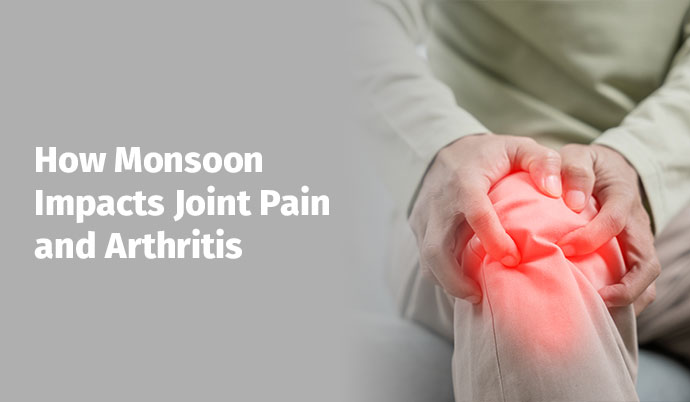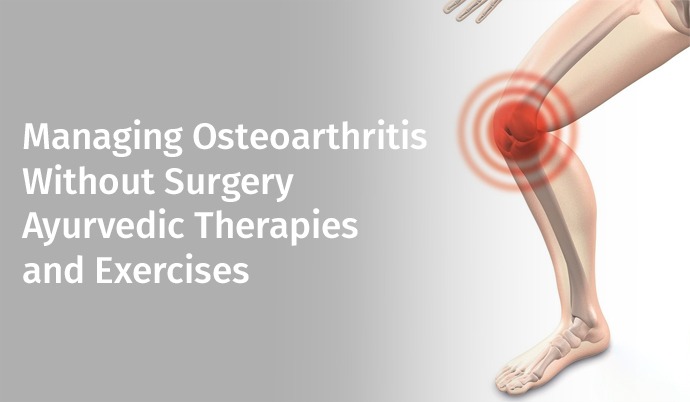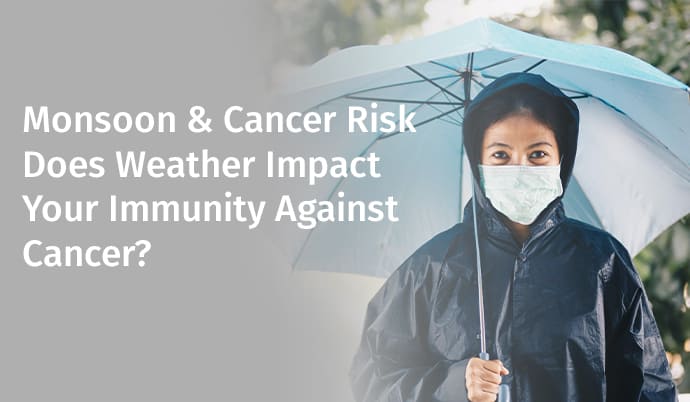
The “Monsoon-Body Connection” is not just a proverb; it encompasses science and centuries-old wisdom, and the fact that your dadi can read the rain before the IMD does, simply by observing her knees, is not a mere coincidence. A study published in the Indian Journal of Rheumatology in 2022 found that nearly two-thirds (68% ) of arthritis patients reported experiencing increased stiffness and pain in their joints during the monsoon months. It would be interesting (and maybe a bit frustrating) to delve into the nature of the connection between joint pain and the rainy season and, most importantly, how to make it through like a real pro.
Why Does Joint Pain Increase During Monsoon?
1. Barometric Pressure Drop & The First Ones To Notice It Is Your Joints
Have you ever heard people say they can feel the rain in their bones? It is not only poetic. As the atmosphere changes in monsoon, the atmospheric (barometric) pressure becomes low, and this influences the synovial fluid that fills your joints. It is this fluid that makes your joints well-lubricated and slide. Tissues may expand with the change of pressure, irritate nerves around the joints, and produce pain: knees, hips, and fingers are the most vulnerable.
2. Cold and Damp = Contraction of muscles + Stiffness of joints
Monsoon = cold spell + increase in relative humidity. Such wet, cold weather leads to the contraction of muscles and ligaments, hence decreasing mobility and resulting in stiffer joints. That is why, in climbing the stairs, men and women with osteoarthritis or rheumatoid arthritis or even a once-injured person feel like wincing on opening the jars of pickles.
3. Impaired Physical Activity
When the rain starts to pour down, we all prefer to stay home, put our walks or yoga classes on hold and huddle under the blanket. Poor circulation that is caused by a lack of movement causes already stiff joints to become cracker-jack.
4. It is all about inflammation
Humidity possesses an evil reputation for provoking inflammatory reactions in persons with autoimmune diseases such as rheumatoid arthritis. The humidity in the air may make the body retain extra fluid, putting a strain on the joints and tissues, thus resulting in swelling and inflammation.
The Indian Orthopaedic Association indicates that about 20-25% of the population of India above 50 years of age are affected by cases of arthritis. A huge percentage of such patients have indicated joint soreness amplified during monsoon (65-70%). Even younger people who have a history of joint injury or are not physically active have learned to develop joint fatigue during the monsoon period.
In an Indian survey by the Indian Society of Rheumatology in 2023, it was found that almost 72% of patients reported decreasing physical activity on a daily basis during monsoons because of the pain, ironically making the problem even worse.
Did you suppose we wanted to miss all our antiquity? In Ayurveda, all motion in the body, circulation, and lubrication of joints are due to the Vata dosha, which is the dosha of air and space. In the case of monsoon, the cold and moist condition aggravates the Vata, leading to more pain, dryness and stiffness of the joints. That is why, when your grandma puts hot mustard oil on her knees or does not want you to eat curd during this time of the year, she is working on old guidelines to placate troubled Vatas. Science may term it as circulation enhancing, but Ayurveda knew it decades ago.
Conditions & Symptoms During Monsoon
Let us examine the monsoon scenario condition by condition:
Post Operative or Post Traumatic Rehabilitation
The old fractures or ligament tears or operations around joints can begin to speak back to you in the rain: the repairing tissues are sensitive to changes in pressure and humidity.
1. Move and Move (It Can Be Stretching Inside)
During the dull rains, when you cannot stop the flow, do not delay and try:
Movement is the best lubrication for the joints. Don’t miss it.
2. Loosen Your Joints Up
3. Your best friend is the Anti-Inflammatory Diet
4. Medicines and Supplements (Not More Necessary)
Vitamin D, calcium, and omega-3 supplements are beneficial, in case they are prescribed by your doctor from the best orthopaedic hospital in Delhi. Rheumatoid Arthritis patients may require some immunomodulatory drugs to be modified in monsoon flare-ups.
5. Dry Up Your Area
During monsoons, rely on the kind of physiotherapy our ancestors taught us about, which is basically a warmed mustard oil massage that makes blood flow and lessens the stiffness in the joints. Do not sleep directly under an Air Conditioner or a fan on a wet day, as it plays around with your muscle repair. Ayurveda claims that copper water (left to stand overnight) aids in lessening the swelling. And it is Insta-aesthetic as well. Monsoon may play havoc with your joints, but it is not obligatory to play havoc with your life. Knowing the effects that the rainy season will have on your body (when you have arthritis or problems in your joints) goes a long way. The other half? Dressing to be warm, acting wisely, giving your body proper nutrition, and listening to what your body wants (and what your grandmothers told you to do). Although the rain can pour down outside, you should at least be able to dance through it or at least walk without cringing. And even after all the necessary precautions, if you don't feel at ease, feel free to consult the specialists and book an appointment at Sir Ganga Ram Hospital today.




